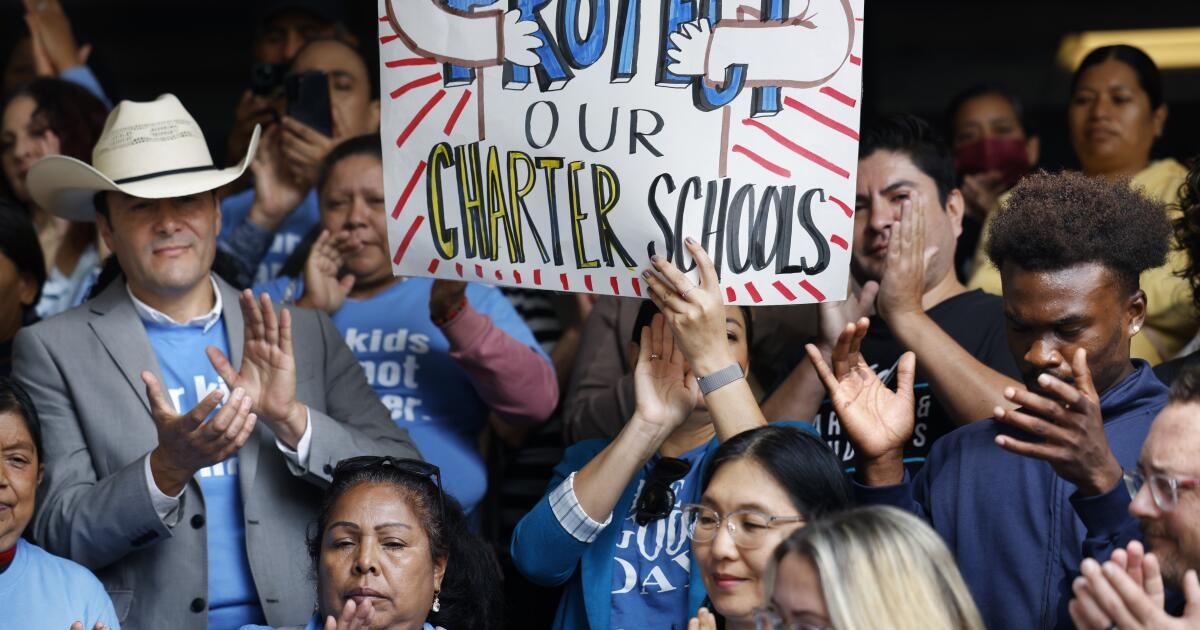Note to the Los Angeles Unified school board: The children in local charter schools are your children, too. They are, for the most part, students who would have attended traditional Los Angeles public schools but whose parents chose to enroll them in one of the nearly 250 publicly funded but mostly privately run schools.
In an era of declining enrollment, the district finds itself in a difficult position when it loses students to charter schools. Each student contributes considerable state funding, which pays for instruction and a wide range of social and administrative services. Therefore, the district's concerns that fewer students will lead to budget cuts are understandable.
But those concerns must take a backseat to what is best for Los Angeles public school students, whether they attend a charter or traditional district school.
On Tuesday, the school board voted narrowly to adopt a new policy that restricts where charter schools can share campuses with traditional schools. The change goes too far in protecting the district's interests while giving too little priority to what works best for all students. The policy is too vague to know exactly what the ramifications are, but one estimate from an LAUSD staff member said about 350 of the district's 850 schools would be off-limits to charter schools. Surely that's unnecessary when right now only 50 campuses are shared with charter schools; most of the district's charter schools have their own independent campuses.
The new policy may well violate the state Education Code, which says public school facilities must be shared fairly among public school students and that charter schools have the right to rent portions of district schools.
Of course, traditional schools shouldn't have to box themselves into a corner of campus to accommodate a charter school. But this policy is not about protecting necessary space; it's about crushing charter schools. Campus sharing at schools with special programs for black students and those with low achievement levels would be discouraged. Only in the case of community schools, which do require more facilities because they provide a variety of services to students and the neighborhood, does the rule seem to have any connection to a school's actual space needs. But there are charter schools that are also community schools; Will the district give them preference?
And, if any further indication is needed that the intent is to reduce the influence of charter schools, the policy advises against allowing a charter on a campus if it would disrupt traditional high school patterns. For example, if an elementary school shares its campus with a charter middle school, parents might be inclined to enroll their children in the charter middle school to keep them on the same campus rather than having them attend the local district-run middle school. .
Parents choose schools based on their perception of where their children will receive the best education, and for too long they had no choice but to accept whatever school the district offered them, which was often substandard. They will enroll their children in traditional middle and high schools if they offer superior education, interesting programs, and a welcoming environment. That is the proper way for the district to keep its high school system running.
It's especially disturbing to hear board members Rocío Rivas and Scott Schmerelson imply that this is just the beginning of more policies to curb charter schools. Schmerelson won the Times' endorsement for a final term on the school board in part because he ran as a centrist who had supported several charter schools in the past. It is especially worrying to hear him say that he intends to continue this campaign against shared campuses.
Charter schools are not the definitive answer to low achievement and are suffering their own setbacks in enrollment. The prestigious charter operator Kipp SoCal Public Schools is closing three of its 23 schools in the area because they do not have enough enrollment. But many charter schools have given a significant boost to students, especially those who need help most, and are giving families more educational options.
There are shared campuses in Los Angeles Unified where traditional and charter schools get along, share resources, and learn from each other. Why doesn't the school district figure out what makes them tick and look to emulate this on other campuses instead of pitting schools against each other? Public school students should not be caught in the middle of this turf war.












